East of the River

Brief Synopsis
Cast & Crew
Alfred E. Green
John Garfield
Brenda Marshall
Marjorie Rambeau
George Tobias
William Lundigan
Film Details
Technical Specs

Synopsis
On New York's Lower East Side, Mama Teresa Lorenzo labors in her spaghetti restaurant, determined to keep her young son Joe honest. When Joe and his friend Nick get into trouble for slugging a railroad detective, Mama saves the boys from the reformatory by promising to discipline Joe and adopt the homeless Nick. While Nick earns straight A's in school and continues on to college, Joe turns to gambling and crime. Joe finances Nick's education and leads his family to believe that he is running a ranch in California, but is actually serving a prison term in San Quentin. Upon finishing his sentence, Joe returns to New York to attend Nick's college graduation and brings his girl friend, Laurie Romayne, who is wanted on a forgery charge, with him. In New York, Laurie, touched by Mama's kindness and concern, begins to help with the household chores and discovers that she enjoys the honest life. Meanwhile, Joe plots revenge on Scarfi and Cy Turner, the two gangsters he blames for sending him to Quentin. Joe informs the police of a robbery that the two are planning, but Turner escapes the police trap. When Scarfi is sent to the electric chair for shooting a policeman, Turner vows to take Joe's life in revenge. To avoid Turner's thugs, Joe leaves town, but Laurie decides to stay with Mama. In Joe's absence, Laurie gets a job, and she and Nick fall in love and decide to marry. In Mexico, Joe learns of their plans and returns to stop the wedding. He threatens to expose Laurie's past unless she gives Nick up, but Mama, learning of Joe's treachery, renounces him as her son. Joe relents, and after delivering Laurie to the church, he eludes the clutches of Turner's thugs by slugging a policeman and getting arrested.

Director
Alfred E. Green
Cast

John Garfield

Brenda Marshall

Marjorie Rambeau

George Tobias

William Lundigan

Moroni Olsen

Douglas Fowley

Jack Larue
Jack Carr
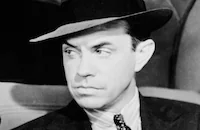
Paul Guilfoyle
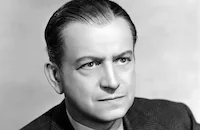
Russell Hicks
Charley Foy
Ralph Volkie
Jimmy O'gatty
Robert Homans
Joe Conti
O'neill Nolan
William Pawley
John Kelly
George Humbert
Eddy Chandler
Al Herman
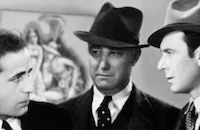
Jack Mower
Frank Mayo
Cliff Saum
Al Lloyd

Tom Wilson
Sol Gorss
Jack Wise

Paul Panzer
Don Turner
Edwin Stanley
William Marshall
Edward Fielding
Jerry Mandy
Richard Clayton
Creighton Hale
Charles Sherlock
Arch Hendricks
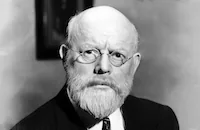
Howard Mitchell
Murray Alper
Al Rhein
George Lloyd
Demetris Emanuel
Hector Sarno
John Sheehan
Ann Edmonds
Armand "curly" Wright
Fred Graham
Ralph Sanford
Pat O'malley
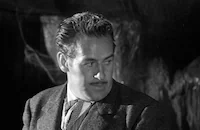
Roy Barcroft
Crew
Adolph Deutsch
John Fante
Leo F. Forbstein
Bryan Foy
Les Guthrie
Sid Hickox
Marie Jenardi
Stanley Jones
Hugh Macmullan
Fred Niblo Jr.
Thomas Pratt
Hugh Reticker
Howard Shoup
Harlan Thompson
Jack L. Warner
Perc Westmore
Ross B. Willis

Film Details
Technical Specs

Articles
East of the River
East of the River is no better or worse than any number of Warner programmers, but Garfield manages to periodically ignite the screen with the intensity that would serve him so well in future, far better-written roles. Garfield plays Joe Lorenzo, a bad-seed on Manhattan's mean streets who wanders from the path of goodness being followed by his adopted brother, Nick (William Lundigan), and soon finds himself in prison. After being released from San Quentin, Joe returns to the old neighborhood, where he promptly gets mixed up with some mobsters. If that isn't bad enough, Nick, who's now a college graduate, finds himself falling for Joe's girl, Laurie (Brenda Marshall). Marriage, guns and overblown melodrama ensue.
Garfield knew a thing or two about New York City street life, although certainly not the faux-poetic type found in East of the River. Born Jacob Julius Garfinkle, on March 4, 1913, he somehow survived a poverty-stricken childhood on the Lower East Side. Young "Julie," as he was known to his friends and family, was famous in the neighborhood for his ability to grab choice products from local merchants and outrun anyone who tried to catch him. Between his bent toward thievery and an intolerant, religious-fanatic father, it's a minor miracle that Julie Garfinkle managed to climbed out of the gutter at all, much less go on to be a popular and influential film star.
Simply put, Garfield found his salvation in acting. As an adult, he would regularly sing the praises of Angelo Patri, a school teacher who took a liking to him at P.S. 45. "For reaching into the garbage and pulling me out," he once said, "I owe (Patri) everything." With Patri's encouragement, Garfield began performing in school plays. Julie needed solid grades in order to join the drama club, so his book-smarts were quickly broadened due to his love of performing. Eventually, he began to dream of a career as a professional actor. After scoring big on Broadway, he made his way to Hollywood, and the rest, as they say, is history.
If Jack Warner had been paying closer attention, he might have realized that The John Garfield Story would have made a terrific movie.
Producer: Harlan Thompson, Jack L. Warner
Director: Alfred E. Green
Screenplay: Fred Niblo, Jr. (based on the story Mama Ravioli by John Fante and Ross B. Wills)
Editing: Thomas Pratt
Cinematography: Sid Hickox
Music: Adolph Deutsch
Art Design: Hugh Reticker
Costume Design: Howard Shoup
Technical Advisor: Marie Jenardi
Principal Cast: John Garfield (Joe Lorenzo), Brenda Marshall (Laurie Romayne), Marjorie Rambeau (Teresa Lorenzo), George Tobias (Tony), William Lundigan (Nick Lorenzo), Moroni Olsen (Judge Davis), Douglas Fowley (Cy Turner), Jack LaRue ("Frisco" Scarfi), Jack Carr ("No Neck" Griswold), Paul Guilfoyle (Balmy), Russell Hicks (Warden).
BW-74m. Closed captioning.
by Paul Tatara

East of the River
Quotes
Trivia
James Cagney turned down the role of Joe Lorenzo.
Notes
The working titles of this film were Mama Ravioli and Bad Boy. According to news items in the Hollywood Reporter, Raoul Walsh was originally scheduled to direct and Ida Lupino was slated for Brenda Marshall's role.















